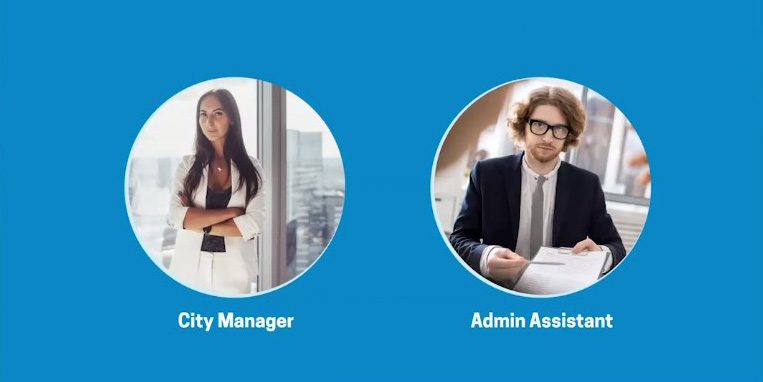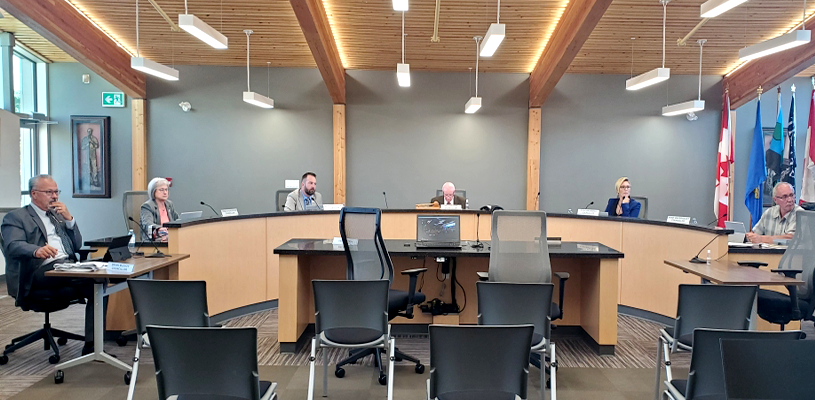Implicit bias uncovered
 Tiffany Hoang has a worked for years to help people better understand the roots of implicit bias and microaggressions, and to provide tools for organizations to deal with them.
Tiffany Hoang has a worked for years to help people better understand the roots of implicit bias and microaggressions, and to provide tools for organizations to deal with them.
Implicit bias and microaggressions are terms that often trigger fear, anxiety, and defensiveness among employees as they try to make sense of what these terms mean and do everything in their power to not be associated with them.
Tiffany Hoang has a worked for years to help people better understand the roots of implicit bias and microaggressions. A renowned diversity, equity, and inclusion trainer and consultant, Hoang works with municipalities, and also local government associations, around anti-discrimination conflict resolution, relationship building, and restorative practices.
Understanding Conscious, Unconscious Bias
In a workshop during the 2020 ICMA virtual conference, Hoang explained discrimination can be conscious and unconscious. The challenge, she said, is people can face questionable actions or behaviors that feel a lot like discrimination. But, when the intention is examined, it can get into a grey area where it can be difficult to tell the difference.
“There’s many different types of discrimination. And when we talk about discrimination, most people think there’s only one, it’s intentional. People are ready to cause harm and they just are out to get you,” Hoang said. “What we don’t always look at or talk about is the unconscious realm, that in fact discrimination can be unconscious and unintentional when it’s fueled by an unconscious or implicit bias.”
What is the relationship between bias and discrimination? Examples of conscious biases are things like stereotypes people often hear about different individuals or social groups, talking about people in general or in the workplace – such as “women are just really emotional” or men are “natural born leaders.”
Those are examples of beliefs, attitudes, or opinions that people hold in their minds and these biases are sometimes conscious. People choose to believe those things and then act on them – whether through action or behaviour – which results in discrimination.
“So say that I have a bias that, you know, women are just emotional. And so the way that you influence or act on that is I explicitly say, ‘Oh, you women are so emotional here, take some tissue.’” Hoang said. “That’s an example of explicit discrimination or trying to cause harm. I’m aware of a prejudice or biases that I have.”
Formation of an Unconscious Decisions
This is different when considering unconscious bias. That is what occurs when somebody has a belief, a stereotype, they don’t personally ascribe to. And yet, it informs any assumptions they automatically make about a person or incident. They’re perhaps not meaning to, but for some reason their mind deceives them. And we don’t always know whether our bias is conscious or unconscious. Sometimes the person themselves doesn’t even realize what they’re doing because they don’t see the bias they have. Perhaps, Hoang explained, they’re really well intentioned, and they want to be inclusive and supportive, but they don’t realize their own bias.
Hoang said examples of this can be found in many workplaces – municipal or otherwise. Often people hear stories about female directors in higher positions who head into meetings where you’ll often see other colleagues looking at a male counterpart instead of the female, even though she’s the one in charge.
And so what are implicit biases? Hoang defined implicit biases as repetitive, automatic, unconscious associations. It’s an invisible mechanism that occurs in people’s minds where they learn to pair objects, identities with associations, like good or bad, positive or negative. Throughout people’s lives – through stereotypes and unconscious learning through family members, TV, the school system, etc. – they learn to pair certain identities with these associations. Eventually these ideas become entrenched.
“Just think about when we were younger. You see girls in the commercials with dolls and different types of nurturing roles. And so, girls create this unconscious thing about being a woman equals nurturing,” she said. “Whereas males are paired with trucks and computers and we learn this association … male equals intelligence. And so we developed these learnings unconsciously throughout our lives and they become these automatic thoughts and beliefs that get carried throughout our minds.”
Impacts of Implicit Biases, Microaggressions
These implicit biases, Hoang explained, aren’t necessarily bad. It’s the ways in which the human brain has developed in order to adopt over time to make things easier to process in the moment. It’s helping to alleviate some things, but sometimes those biases can cause harm, especially when we are making an automatic assumption about a person and that informs or influences how people act around others or impacts the expectations around them. That’s when they can cause harm. Unintentional, unconscious harm, but still harm none the less.
Where does this type of discrimination occur? It takes place, Hoang said, in both conscious and unconscious discrimination. It shows up in people’s relationships with others. Additionally, it informs promotions and advancements where certain people are seen as more or less deserving of a promotion, benefits, and how people justify those choices. It also influences decision making around programs, policies, and practices that municipality’s implement.
The most significant, however, might be around who is seen as a good fit for given role.
“There’s a lot of implicit biases and microaggressions infused in hiring,” Hoang said. “You see it in what we might have an image of who we think might be the best fit for something. Or, just a cultural fit without really questioning why that is.”
How to Address Implicit Bias in the Workplace
And so, how can organizations address these types of implicit bias? Hoang said there several tools people can utilize to both educate themselves, but also their organizations, around dealing with this types of discrimination.
The best thing to start with, Hoang said, is making sure everybody is on the same page. Developing a common language together from which to discuss these situations is the best way to achieve this. Creating new HR policies to address implicit bias and discrimination is essential. This is especially true as it can be difficult to hold people to an expectation around something they’ve never learned. This is why training is so important. But then, once people have that learning, there can be zero tolerance for people who are consciously practicing discrimination.
All that said, the next time someone has an interaction and they notice what appears to be an unconscious bias or microaggression happening, they should feel empowered to interrupt it by asking a clarifying question. As Hoang describes it, the practice of calling somebody in – as opposed to publicly calling them out on their behaviour – involves asking a clarifying question and allowing them to explain themselves.
For example, Hoang recalls a conversation where a city IT manager – who happened to be a woman. The IT manager was made to feel uncomfortable during a meeting with a male colleague who didn’t know he would be speaking with a woman. Upon being introduced, the man she was meeting with expressed his surprise that a woman would be in her position.
“Asking that clarifying question, ‘Tell me more about what you meant by that?’ or, ‘Tell me more about this comment that you made. I’m a little bit curious around why you feel so surprised that I’m the IT director,’” Hoang said. “What that does is it puts a mirror up to the other person, requires them to pause a little bit. Then they go back and ask themselves what did cause them to say that. You’ll know it was unconscious if they’re surprised when they tell you, ‘Oh my gosh, I didn’t mean that.’”
If they were showing unconscious bias and truly didn’t mean to put the other person down, Hoang explained, that will become quickly apparent.
Perhaps the most important tool, however, is for individuals to start examining their own unconscious biases and become more self-aware of what drives their own decision making.
“Ask yourself what implicit bias might be seeping into my work that I’m not aware of,” Hoang said. “Probably the most powerful, hardest thing. You might begin to see, ‘Oh, I had an unconscious bias about that person; good thing I didn’t act on it.’” SM
✯ Municipal World Insider and Executive Members: You might also be interested in Evert Akkerman’s article: The role of HR in … hunting submarines. Note that you can now access the complete collection of past articles (and more) from your membership dashboard.
Sean Meyer is Senior Content Editor for Municipal World. During his 25-year career in journalism, Sean has covered municipal politics in several small- and medium-sized communities and gained an understanding of the structure and political framework of government.
Related resource materials:


